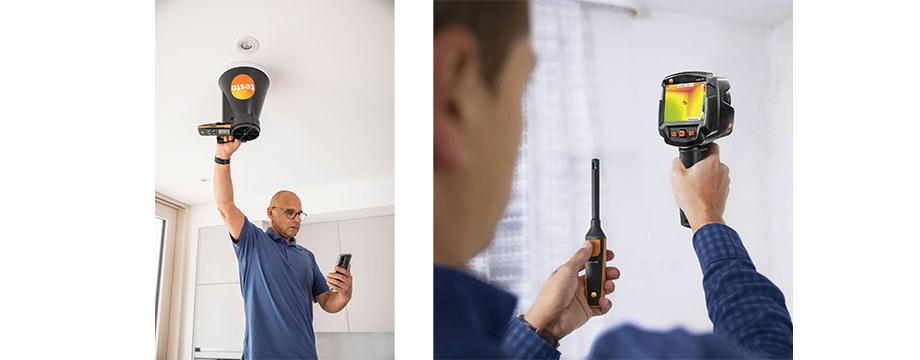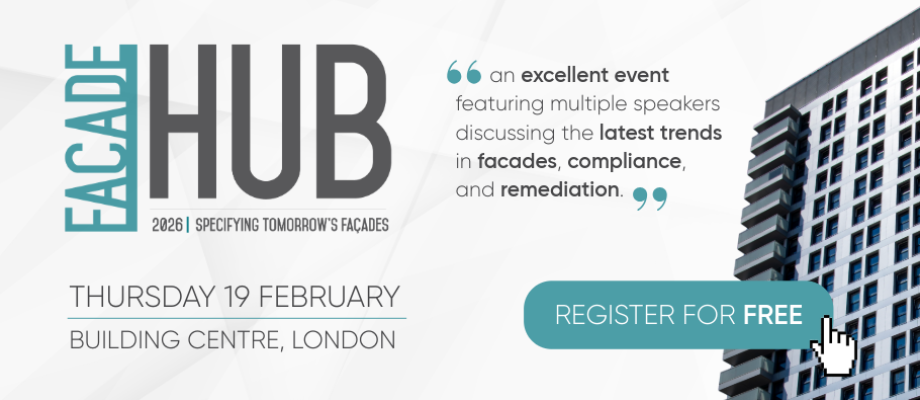In the realm of social housing, the challenge of mould and damp demands urgent attention. These issues not only compromise the aesthetic appeal of properties but also pose serious health risks to residents if left unaddressed. Following recent legislative amendments emphasising the necessity of safe and habitable living conditions, there is heightened pressure to tackle these concerns promptly, especially considering tragic incidents such as the passing of Awaab Ishak.
Effectively combatting mould and dampness begins with identifying their root causes. Often, these stem from poor ventilation, elevated humidity levels and structural weaknesses. However, pinpointing these underlying issues can be challenging without the right tools and expertise. There are a number of innovative products that can assist housing associations in identifying and addressing these issues head-on, whilst also facilitating data documentation and analysis. Below this is explored further.
Ventilation
A well-balanced ventilation system is essential for preventing mould growth. Proper airflow ensures that humidity levels are controlled, minimising the accumulation of moisture on surfaces. By using an instrument such as the testo 417 vane anemometer you would be able to assess airflow velocity and volume flow of air, garnering precise measurements to determine the effectiveness of ventilation systems. Additional funnels and flow straighteners may also be more appropriate for different size or types of inlets/outlets, such as a swirl outlet, which are optional extras in such devices. Another benefit of a device like the testo 417 is the app compatibility, which aids configuration and visualization of results alongside automatic report writing.

Ambient Humidity & Surface Temperature
In addition to ventilation, monitoring ambient humidity levels and surface temperatures is critical for mould prevention. This is because excess moisture in the air makes it more likely for condensation to form on colder surfaces, creating an ideal growth environment for mould. Measuring these parameters with specifically designed devices such as the testo Smart Probes mould kit, comprising of a thermohygrometer and an infrared thermometer. This kit equips users with an invaluable mould-risk reading via the app, which evaluates these figures and displays results in a ‘traffic light system’, where areas at high risk are marked in red. This is extremely useful information to be communicated into a report or stored as data.
Thermal Imaging
Thermal imaging complements these efforts by giving users a visual cue on risk areas, mainly pertaining to moisture intrusion and structural weaknesses. This is important as they may lead to heat-loss which could cause even more cold surfaces for the warm air to encounter. This enables housing associations to identify risk areas in real-time and direct their attention towards remediation processes before mould becomes established, avoiding potential damage and health risks. A unique benefit of a device such as the testo 872s is its compatibility with the testo 605i thermohygrometer, which is available as a bundled kit, as this allows you to sync surface moisture readings to the camera and enter a special ‘humidity mode’, meaning mould risk can be visualised efficiently. The associated application also assists in displaying this data and automating the process of linking it to a report, making processing these images that much easier.

Data Logging
In some cases, longer-term monitoring of values is more beneficial, to get a broader view of the situation. Individual measurements can be unrepresentative of the full picture as these are only taken at one point in time. By having a fixed data-logger in place, any fluctuations can be analysed and remediation work can be backed by data. Providers such as Testo offer data-loggers with built-in memory or that are data-enabled, allowing figures to be stored in the cloud and viewed remotely.
Documentation
Integration of these technologies into maintenance and inspection protocols enables housing associations to identify and address problem areas swiftly. Applications such as the testo Smart App also greatly help with administrative burdens such as data storage and report writing when using these devices. Reports are automatically written and accessible as soon as the inspection is done and available to be updated to assess the success of remediation strategies, saving valuable time and attention.
Conclusion
In conclusion, addressing mould and damp in social housing is paramount for ensuring health and well-being of residents. Although it is challenging to monitor, having the right tools and technology at your disposal makes the process more straight-forward and minimises time spent on identifying issues so that attention can be turned to remediation strategies and evaluating their success. There has been a huge leap in innovation made in this space and these types of products can definitely contribute to safer and more habitable living conditions, so they are more than worth looking into.
Want to find out more?
Click here to read our free practical guide on identifying and avoiding mould.
Image © Testo
- Log in to post comments













